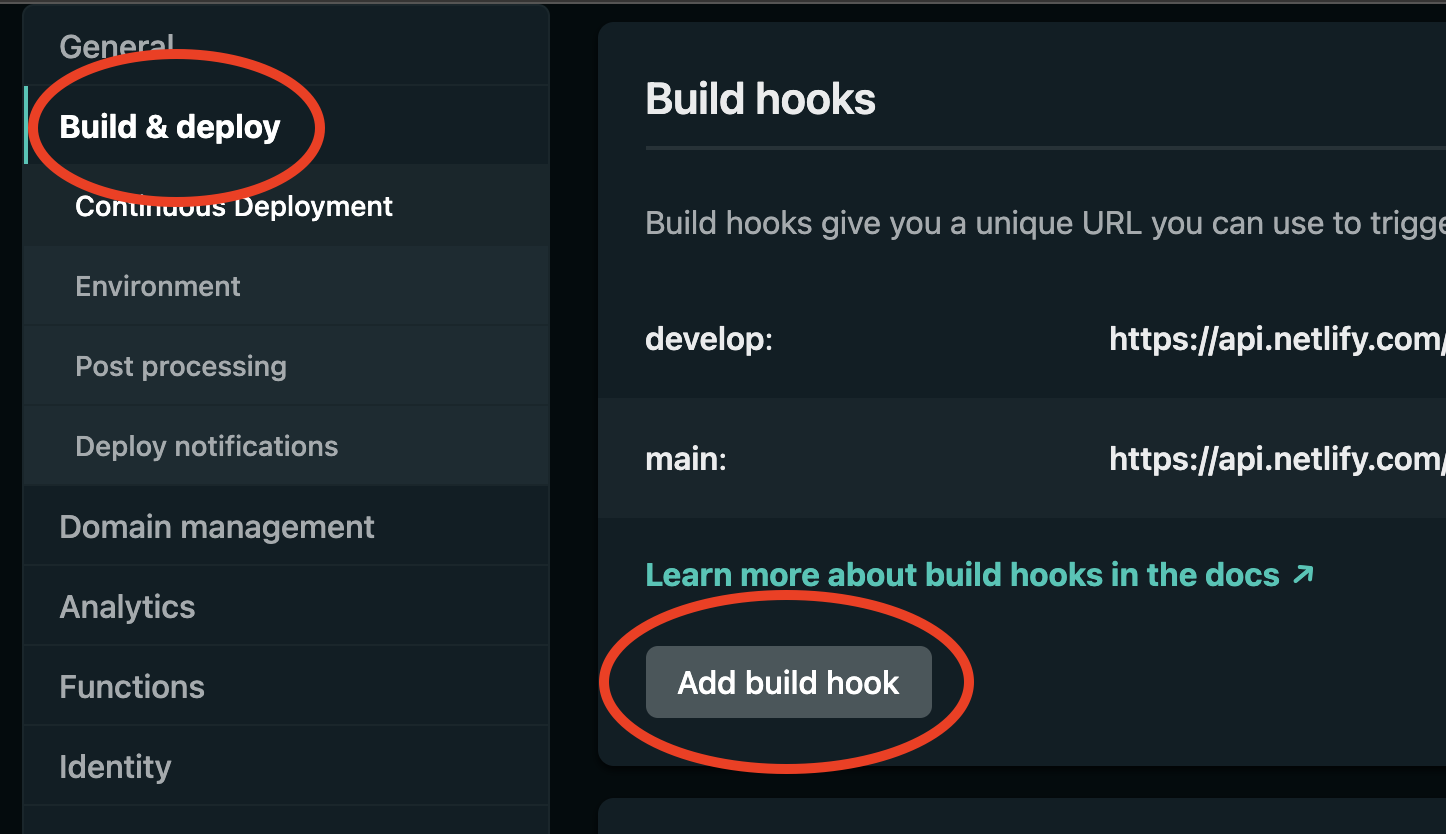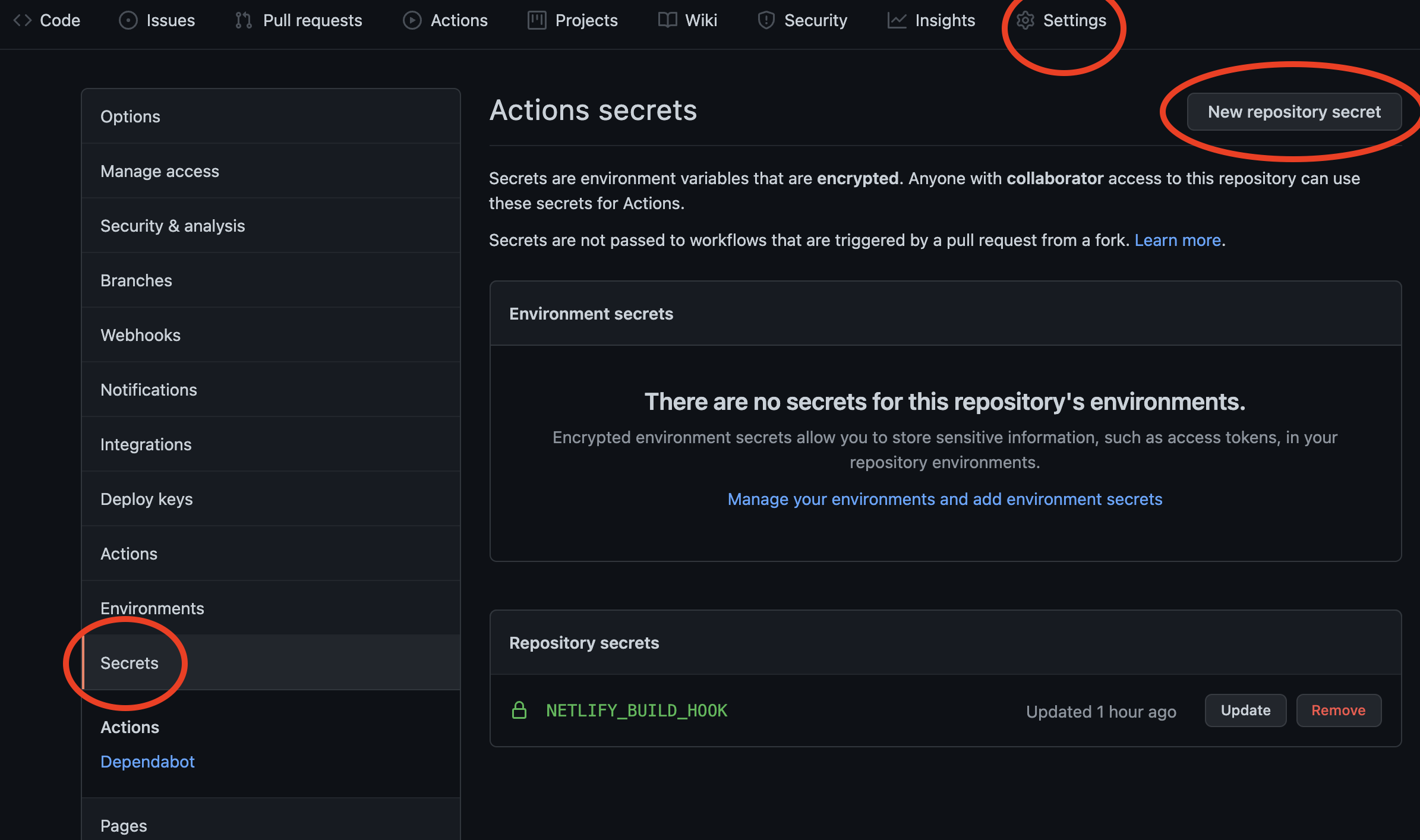Automatic Current Year in Footer with a Github Action, a Build Hook and no JS

Photo by Roven Images on Unsplash
The classic way of getting an always up to date year in a <footer> is to
generate it every time someone visits your website.
Either with a bit of JS:
<script type="text/javascript">
document.write(new Date().getFullYear());
</script>
Or something similar server side:
<?php echo date("Y"); ?>
But what about static sites without server rendering and a deep desire to minimize client-side JS? How about triggering a build with a cron job every new year, while you sip on some champagne?
With modern tools like Github Actions and Netlify build hooks we can get this done within an hour.
Note that Github Actions could be replaced by any other cron job runner and Netlify by most modern static hosting platform.
But first… make sure the year in your footer in generated by your SSG
Take a minute to make sure the date in your footer in dynamically generated by your SSG. I’m using Hugo, so getting the current year is as simple as calling
{{ now.Year }}
in my footer template.
Since there is a gazillion SSGs, just search for
{your SSG} generate year in footer and I’m sure you’ll find something like
this quick tutorial for Eleventy.
Generating a build hook
I’m using Netlify, but the process is almost the same with other hosting platforms.
Vercel has Deploy hooks,
so does Cloudflare,
Render
and most probably {your host here}.
Generating a build hook with Netlify
In your “Site settings”, go to “Build & deploy”, “Build hooks” and add a build hook for your production branch.

Your hook is a unique URL and it probably looks like this: https://api.netlify.com/build_hooks/SomeRand0mn3ss
You can try it right away by sending a POST request with curl and making sure it triggered a new deploy.
curl -X POST -d {} YOUR_UNIQUE_URL
Setting a Github action to run every new year
Thanks to Jinksi’s open-source repo, this was easy to figure out.
Create .github/workflows/main.yml at the root of your repo, and use this as a
starter:
name: Trigger Netlify Build
on:
schedule:
- cron: "*/10 * * * *" # every 10 mins
jobs:
build:
name: Request Netlify Webhook
runs-on: ubuntu-latest
steps:
- name: Curl request
run: curl -X POST -d {} YOUR_UNIQUE_URL
This is set to run every 10 minutes and does one simple thing, it runs this
curl -X POST -d {} YOUR_UNIQUE_URL
on the latest version of ubuntu.
🚨BUT, before you commit and push this file, you might want to turn YOUR_UNIQUE_URL into a secret.
In the Github repo, navigate to “Settings”, “Secrets” and create a “New repository secret”.

Once you created your secret, you can use it in your Action.
I called mine
NETLIFY_BUILD_HOOK.
run: curl -X POST -d {} ${{ secrets.NETLIFY_BUILD_HOOK }}
Once you tested your action and feel confident, change the cron schedule from
schedule:
- cron: "*/10 * * * *" # every 10 mins
to
schedule:
- cron: "1 0 1 1 *" # January 1st, at 00:01
and check that everything worked whenever you wake up on January 1st!
Pitfalls of this technique
This technique is great for my simple blog, but I can think of at least 2 caveats.
1. Check your timezones
Unless you configure them otherwise, both Gihub Actions and the Netlify build environment use the UTC timezone. This means that the year in your footer will only change to the next year when the new year hits UTC, not your users’ timezones.
I cannot think of a way to set the year correctly according to the end user’s timezone that does not involve client-side javaScript, but I can live with up to 24 hours of wrong-year-in-the-footer for some users.
2. Make sure your production branch is deployable
I mean, it should be, right? But if someone made a drunk commit on your production branch and manually rolled back to a previous deploy in Netlify/Vercel/Whatever… this drunk commit better be fixed before new year’s eve!
Conclusion
You might be thinking this is a lot of work to avoid a JS one-liner…
And you might be right.
But I like to get that extra 1ms of speed when I can and using document.write
yields a warning when running lighthouse tests.
So, this is not a total game changer but I’m happy with it!
You can check the source code of my Github action if this post wasn’t clear enough 🙂